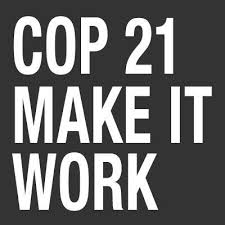

Economy
Countdown to historic climate meeting in Paris
Climate negotiators meet in Bonn from today for a final round of discussions before a historic meeting starts in Paris in six weeks, where a new global climate agreement is expected to be approved.
By early October, 146 countries, representing almost 87 per cent of global greenhouse gas emissions, had submitted their climate targets to the UN Framework Convention on Climate Change (UNFCCC).
These country climate targets – called Intended Nationally Determined Contributions or INDCs – will be the cornerstone of a new global climate deal to be agreed in December at a meeting of the 196 Parties who are members of the UNFCCC.
Dr Stephen Cornelius, WWF-UK’s chief adviser on climate change said: “The countries’ pledges to cut emissions are a major step forward but don’t take us far enough to prevent dangerous climate change. The next steps we take must be fair and deliver a safe future.”
Samantha Smith, leader of WWF’s Global Climate and Energy Initiative said: “Even as momentum outside of the UN climate negotiations has been steadily building – among faith groups, business and civil society – inside the negotiations progress has been slow and must now switch into high gear.
“Clearly, there is quite a bit of work still to be done to get the fair, ambitious and transformational climate deal the world needs. We must leave Bonn with a much stronger draft agreement than what we have at the moment, especially in terms of ensuring ambition and fairness throughout,” she said.
Tasneem Essop, head of WWF’s delegation to the UNFCCC said, “Coming out of Bonn, we will need a draft agreement that is easy to use as a basis for resolving issues that need political will to anchor ambition in line with the latest climate science for limiting global warming.” This must include:
– Clear commitments that climate finance will be scaled up in regular cycles from the floor of $100bn in 2020;
– Equity and fairness reflected adequately throughout the new agreement;
– A Strong process for review and ratcheting of targets;
– As a stand-alone provision, a permanent international mechanism to deal with Loss and Damage due to climate change.
– Explicit adoption of a strong global goal for Adaptation to drive increased adaptation action and support to help those facing the portion of climate change impacts that are already unavoidable.
While most of the focus in the negotiations is on what countries will do after 2020, it is vital that attention be kept on pre-2020 actions, said Essop.
“Science tells us that in order to keep global warming to well below 1.5 or 2 degrees, emissions must peak before 2020. These pre-2020 actions will need to provide a strong foundation given the already inadequate commitments made by governments through the INDC’S for the post-2020 period,” she said.
The current draft agreement contains many of the right elements for pre-2020 action. “We must move to implementation through scaling up efforts on renewable energy and energy efficiency and in the land-use sector, if we are to close the emissions gap,” said Essop.


 Environment9 months ago
Environment9 months agoAre Polymer Banknotes: an Eco-Friendly Trend or a Groundswell?

 Environment11 months ago
Environment11 months agoEco-Friendly Home Improvements: Top 7 Upgrades for 2025

 Features8 months ago
Features8 months agoEco-Friendly Cryptocurrencies: Sustainable Investment Choices

 Features9 months ago
Features9 months agoEco-Friendly Crypto Traders Must Find the Right Exchange





























